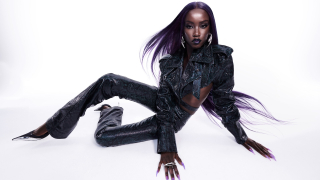ABC is about to step into the costume drama lane with Shonda Rhimes’ upcoming series, Still Star-Crossed. The show, which takes on William Shakespeare’s Romeo and Juliet, starts where the play ends—after Romeo and Juliet have committed suicide in order to be with each other forever.
The warring families they hail from—the Montagues and Capulets—still try to tear each other apart, but for the sake of the Italian city of Verona, they are forced to come together in an arranged marriage between Rosaline Capulet (Lashana Lynch) and Benvolio Montague (Wade Briggs). Of course, high drama, romance and scandal will be a huge part of the proceedings.
This show is going to be a must-watch when it premieres on May 29, and not just for the Shondaland factor. If you’re anything like me, you’re probably a huge costume or historical drama fan. I love seeing all the trappings of a good soap opera played out in sumptuous clothes and beautiful surroundings. It’s escapist entertainment at its best and most fashionable.
From my time on the internet, there have been many Twitter live tweets of PBS’ historical dramas, from Downton Abbey to Granchester, led by Black women. Yet, the historical drama genre frequently leaves Black women and other women of color out of the storyline. Instead, many marginalized communities are forced to align themselves with stories that view them as either on the outskirts of society or removed from society altogether.
Films based on the works of Jane Austen come to mind, seeing how we’re in the age of racebending, it’d be really interesting to see how a director or screenwriter would interpret Pride and Prejudice with a non-White Elizabeth. It would add another level of nuance, possibly, and it would also provide non-White audience members an outlet to finally see someone they can identify with on a more personal level in the genre they love.
On the other hand, instead of racebending every costume drama character, it would be great if studios didn’t whitewash the characters of color who are in these classic stories. Take Wuthering Heights for instance. The character of Heathcliff isn’t White like he’s been portrayed in the movies. Instead, he’s described as a lascar, which is an antiquated term referring to Indian sailors. Also, further description provided by Emily Brontë—which includes a now-offensive term—could also mean Heathcliff is of the Roma people, who did originate from India and went on to migrate to other parts of the world. In any event, he’s not White. However, he’s routinely played by White actors, at least until the 2011 indie adaptation of Wuthering Heights, which starred then-unknown actor James Howson as Heathcliff.
Another example of keeping non-White characters’ racial integrity intact would be The Count of Monte Cristo. The book itself is written by Alexandre Dumas, a Black French author. Incidentally, it should be said that Cary Fukunaga and John Legend are currently working on adapting the book The Black Count: Glory, Revolution, Betrayal, And The Real Count of Monte Cristo, into a film. The book is about Dumas’ father and inspiration for Edmond Dantès—the main character in The Count of Monte Cristo—French Revolution-era general Thomas-Alexandre Dumas. With that inspiration in mind, wouldn’t it have been great to have the many film adaptations of The Count of Monte Cristo actually respect Dumas’ original vision?
The lack of Black and non-White characters in prominent roles in historical fiction has led too many viewers and creators to believe that it’s not historically accurate to have non-White characters as lords and ladies of the manor. Instead, non-White characters are relegated to either slave and servant roles or roles depicting the poor. That’s not to say that those roles are invalid, but there was more to Europe’s population of color than just existing as laborers for White society. There were royal musicians, military elite and indeed, queens. Furthermore, Europe has been a multicultural society for as long as there have been people in existence, so the idea that Europe was at one point a safe haven for pure Whiteness is a dangerous and limiting falsehood.
This brings me back to Still Star-Crossed. It’s high time we as Black women have more than just Belle, the story of Black English aristocrat Dido Elizabeth Belle, to hang our hats on. We need to have a variety of images of Black women in historical European society, and Still Star-Crossed is helping carry the load Belle has had to carry all by itself. There will be no finer day in Shondaland than when I’ll be able to sit down with my various TV-viewing snacks and watch the premiere episode of Still Star-Crossed, excited to see a dark-skinned Black woman and her family ooze regality on my screen. The fact that audiences across America will see the same thing will be icing on the cake; finally, everyone will have the opportunity to realize that yes, Black women were everywhere, even 1300s Italy.
Monique Jones is the owner of JUST ADD COLOR, an entertainment news site focusing on race and culture.













